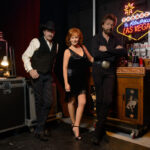Like many who grew up in the 1980s, I have fond memories of watching the M*A*S*H TV series. One element that particularly stuck with me was its distinctive theme tune. Recently, while seeking musical inspiration, I stumbled upon a trailer for a M*A*S*H rerun, and it reignited my interest in the song. This iconic piece, officially titled Theme from M*A*S*H (Suicide is Painless), was composed by Johnny Mandel for the 1970 M*A*S*H movie. The poignant lyrics were penned by a then 15-year-old Mike Altman, son of the film’s director, Robert Altman. For deeper insights into the composition process, Johnny Mandel’s interview available here offers a fascinating perspective.
From Movie Opening to TV Icon: Exploring Versions of the Mash Theme Song
The original film version of the mash theme song is set in A minor and follows a 4/4 time signature. Its simple yet memorable guitar riff intro, an ostinato, captivated me. As I began composing for flute, guitar, and cello, this ostinato became a key inspiration. It features prominently in the first verse, reappears in a modified form in the second, and makes a return towards the song’s conclusion and outro, providing a cohesive musical thread.
The mash theme song as adapted for television is considerably shorter and more concise. You can listen to the TV theme version here. This brevity made it instantly recognizable and perfectly suited for the episodic format of the show.
The song’s impact extends beyond its use in M*A*S*H. It has been covered by numerous artists across genres. A notable rendition is the 1992 cover by Manic Street Preachers, a band I greatly admire, available here. Their version brings a different energy to the song, showcasing its versatility.
However, my primary interest lay in exploring woodwind arrangements of the mash theme song. I discovered an appealing arrangement by Sjoerd van der Veen for woodwind quintet in D minor, which can be heard here. This version became the focal point of my analysis, particularly because of my focus on composing for woodwind instruments and wanting to understand the flute’s role within this arrangement.
Deconstructing the Woodwind Quintet Arrangement: A Structural Overview
To understand the nuances of the woodwind quintet arrangement of the mash theme song, I undertook a structural analysis. The table below breaks down the arrangement section by section, highlighting the instrumentation and musical techniques employed:
| Section | Bar | Instruments/Techniques Applied |
|---|---|---|
| Introduction | 1-4 | – Bb clarinet and Horn in F: complementary ostinato (harmonized) – Bassoon: Rhythmic ostinato |
| Verse 1 (A) | 5-14 | – Oboe introduces melody line. – Flute enters near the end of bar 8, adding texture. – Bar 12 features a one-bar shift to 2/4 time, extending the phrase by two beats, building tension towards the chorus. Crescendo and high flute part enhance the drama. |
| Chorus (B) | 15-22 | – First 4 bars: Flute, oboe, and clarinet play a somewhat staccato, harmonized melody. Horn and bassoon provide a more legato bass line with an interesting rise and fall quaver phrase (bars 17-18). – Clarinet takes over the lead melody from the end of bar 18. – Intro ostinatos return in bars 21-22, signaling the return to the verse structure. |
| Verse 2 (C) | 23-31 | – Flute assumes the lead melody, with oboe joining in bar 27 to enrich the sound. – Clarinet, horn, and bassoon provide similar yet varied accompanying lines. – By bar 30, all instruments except bassoon play the melody in harmony. Bassoon offers a supporting role with an interesting bass line. |
| Final Chorus (D) | 32-42 | – Flute and oboe lead the first two bars in a pleasing harmony. Flute becomes more prominent and high-pitched, cutting through and supported by other instruments. – Clarinet has a more textural part from bar 33, including a non-diatonic E flat (concert D flat), which seems somewhat subdued in this synthesized version. – The ending, from bar 39, is louder, more prominent, and accented, reminiscent of the TV theme’s energy. – The octave-drop ending feels slightly abrupt, mirroring the TV theme’s concise conclusion. |
Conclusion: The Lasting Legacy of a Theme
My exploration of various arrangements of the mash theme song has been a rewarding musical journey. After repeated listening, I find myself drawn back to the original film version. The guitar riff ostinato is undeniably captivating and serves as an effective hook throughout the song. This simple phrase became the catalyst for my own compositional endeavors.
The woodwind quintet arrangement offered a contrasting and insightful perspective. While texturally rich and well-crafted, I felt the clarinet’s voice was occasionally overshadowed, particularly in the final chorus. Adjusting the dynamic balance in the score could potentially remedy this. Ultimately, I believe this arrangement would truly shine when performed by live instruments, revealing the nuances perhaps lost in a synthesized rendition. One wonders if Sjoerd van der Veen has ever had the opportunity to hear this score brought to life by a professional woodwind quintet. The mash theme song, in all its iterations, continues to resonate, proving the enduring power of a well-crafted melody.


